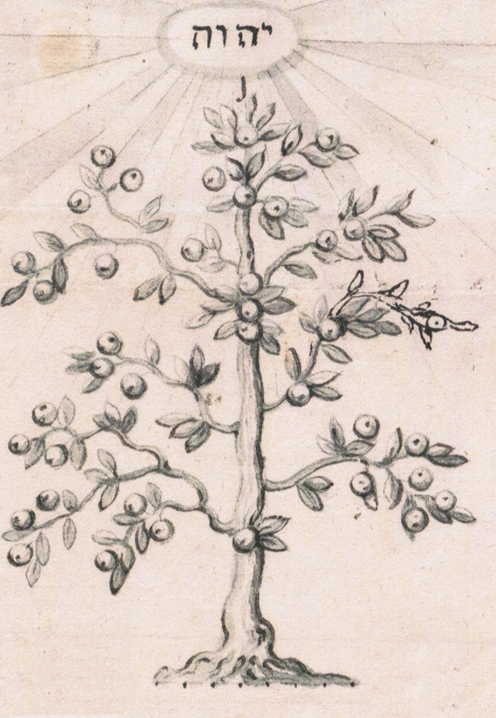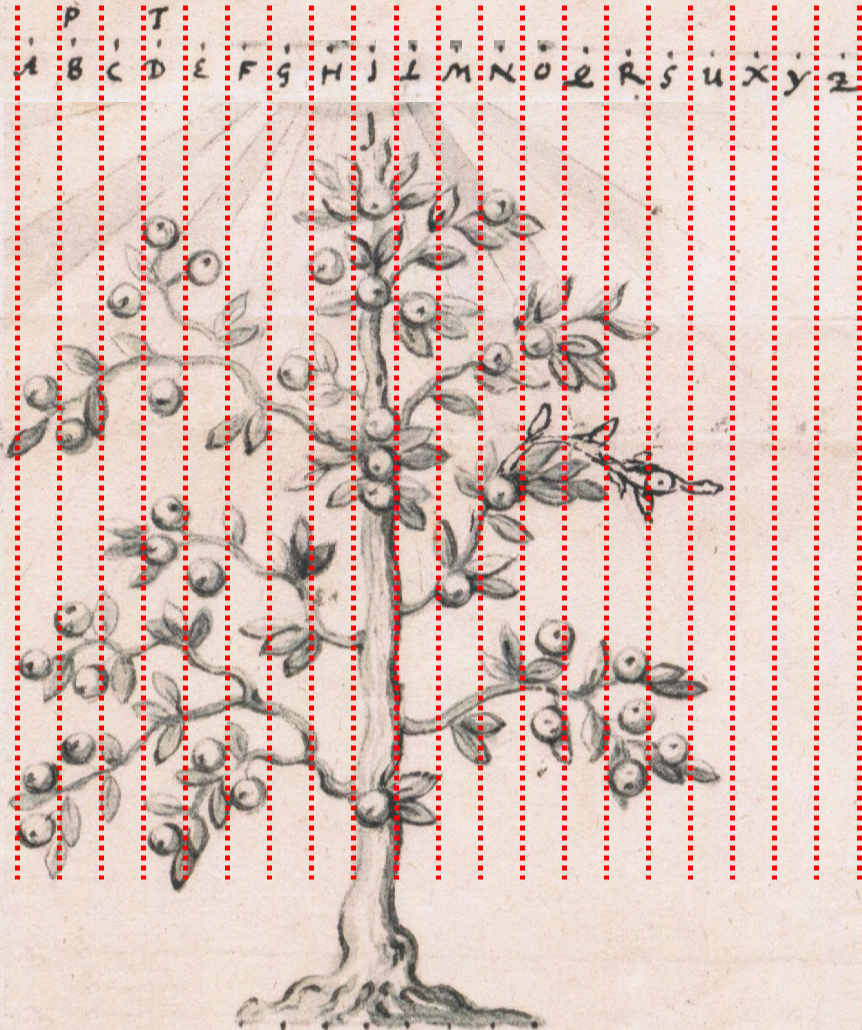Sometimes, deciphering a cryptogram is easier than reading the deciphered message. Here are two plaintexts I have difficulties to understand.
One of the most beautiful examples of steganography I know is a message hidden in a drawing from the 17th century. This drawing, which shows an apple tree, was a birthday present to Augustus the Younger, Duke of Brunswick-Lüneburg (1579-1666), who was known to have an interest in encryption and codes. Under the pseudonym Gustavus Selenus, Augustus even wrote a book about cryptology.
A Latin message in an apple tree
I introduced Augustus’ apple tree steganogram on this blog in 2015 (thanks to Gerhard Strasser for making me aware of it). Here’s the picture that contains the message:
To decode the message, one needs to divide the picture into 20 columns and mark each one with a letter of the alphabet (the letters P and B, T and D, as well as I and J, respectively, are identified):
Now, each apple represents the letter that stands at the top of the column it is located in. Read from top to bottom, we can decode the following message:
INDE HIC LONGAT IBI SINT TEMPORA PROSPERA FIAT
I have introduced this nice steganogram many times in my presentations. However, I was never able to say what the plaintext message means. Although I had four years of Latin at school, I could not translate it. Can a reader tell me what these words mean?
The La Buse cryptogram
The message hidden in the apple tree is not the only decrypted text I have trouble to understand. Many readers certainly know the story of French pirate Olivier Le Vasseur (ca. 1690-1730), also known as “La Buse” (“the Buzzard”). In the early 18th century, Le Vasseur seized numerous ships in the Indian Ocean. In 1729 he was captured and executed on the French island of La Réunion.
According to a well-known legend, Le Vasseur, when he already had the gallows rope around his neck, threw a parchment bearing an encrypted message into the crowd and shouted: “Find my treasure, the one who may understand it!”. Though many have tried, Le Vasseur’s treasure has never been found.
Here’s the alleged message:

Public domain
This ciphertext is encrypted in a Pigpen cipher. In 1947 a certain Reginald Cruise Wilkins broke it. According to Nick Pelling’s blog, the plaintext reads as follows:
aprè jmez une paire de pijon tiresket
2 doeurs sqeseaj tête cheral funekort
filttinshientecu prenez une cullière
de mielle ef ovtre fous en faites une ongat
mettez sur ke patai de la pertotitousn
vpulezolvs prenez 2 let cassé sur le che
min il faut qoe ut toit a noitie couue
povr en pecger une femme dhrengt vous n ave
eua vous serer la dobaucfea et pour ve
ngraai et por epingle oueiuileturlor
eiljn our la ire piter un chien tupqun
lenen de la mer de bien tecjeet sur ru
nvovl en quilnise iudf kuue femm rq
i veut se faire dun hmetsedete s/u dre
dans duui ooun dormir un homm r
esscfvmm / pl faut n rendre udlq
u un diffur qecieefurtetlesl
I have tried to read and translate this message, but the French I learned at school proved far from sufficient to make sense of it. I’m not sure whether it is at all possible to translate these lines. It is well possible that we are dealing with pseudo-French nonsense. Can a reader say more about Le Vasseur’s plaintext? Does a translation already exist? If not, is it possible to create one?
And no, I don’t think that a translation of this message will lead us to a hidden treasure.
Follow @KlausSchmeh
Further reading: How artists depicted cardsharping with steganography
Linkedin: https://www.linkedin.com/groups/13501820
Facebook: https://www.facebook.com/groups/763282653806483/





Kommentare (15)